Cambodia, the "Kingdom of Wonder," is a country that captures your heart, challenges your perspective, and leaves an indelible mark on your soul. It’s a land of two distinct halves: one defined by the unimaginable ancient grandeur of the Khmer Empire, and the other by the devastating, recent history of the Khmer Rouge.
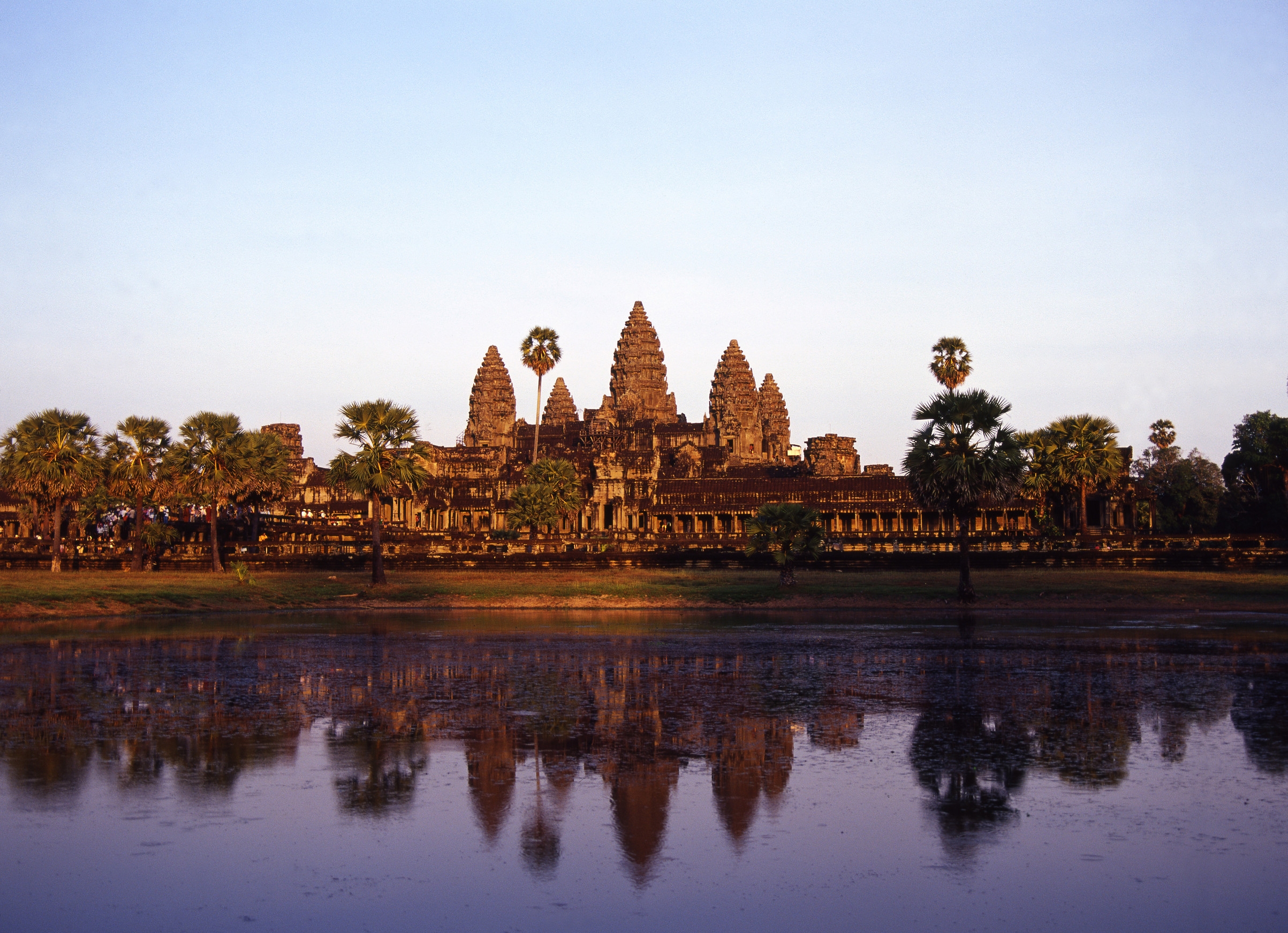
But today, Cambodia is a nation reborn. It’s vibrant, resilient, and forward-looking. From the world’s most spectacular temples to pristine tropical islands and bustling cities, it offers one of the most profound and affordable travel experiences in the world.
And the best part? Getting there has never been easier. This guide will walk you through why Cambodia should be at the very top of your travel list and how its simple eVisa system removes all barriers to entry.
Cambodia eVisa Guide (2025)
Getting a visa for Cambodia is one of the easiest processes in Southeast Asia. Here is a clear breakdown of the eVisa and your other options.
What is the Cambodia eVisa and What Type Do I Need?
The Cambodia eVisa is an official online visa that you apply for before your trip. It saves you from waiting in the Visa on Arrival queue at the airport.
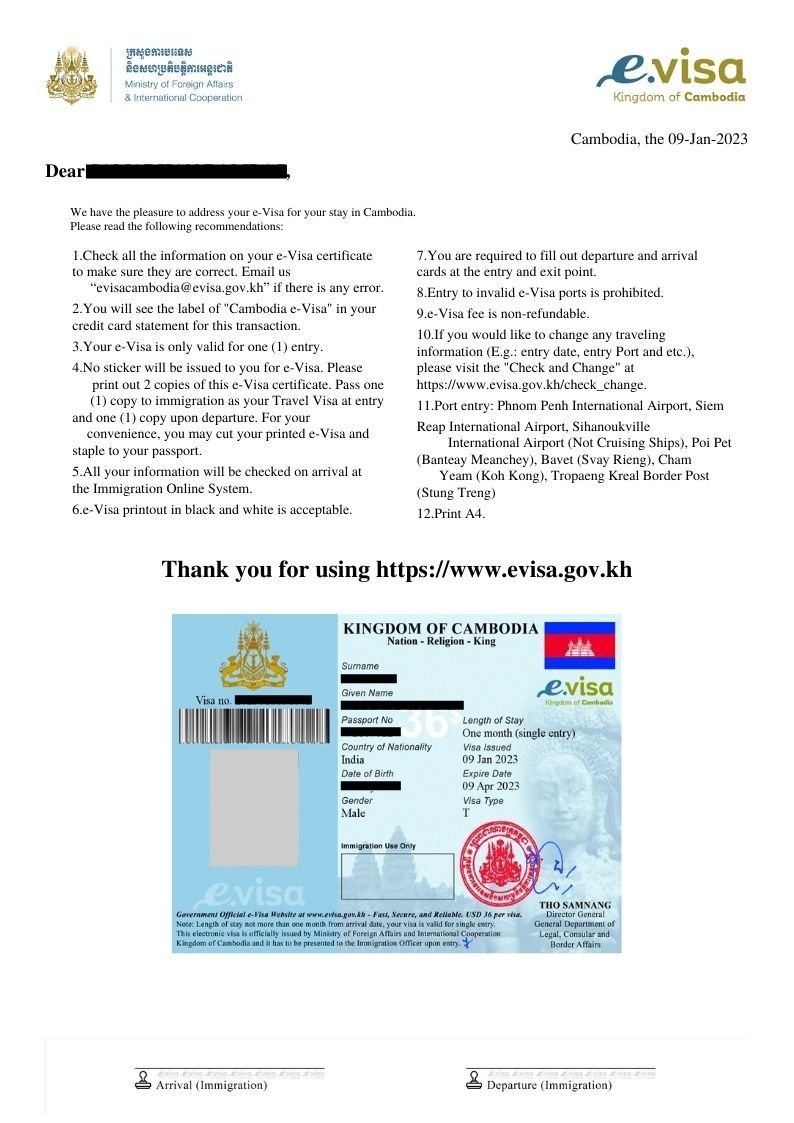
For tourists, the only type you need to know about is the "Type T" Cambodia Tourist eVisa. This is the standard visa for all leisure travel, including visiting Angkor Wat, the islands, and the cities. It is a single-entry visa, valid for a 30-day stay.
How Easy is it to Get a Cambodia eVisa in 2025?
It is incredibly easy, fast, and 100% online. Gone are the days of embassy appointments or uncertainty.
Here is the simple, 3-step Cambodia eVisa application process:
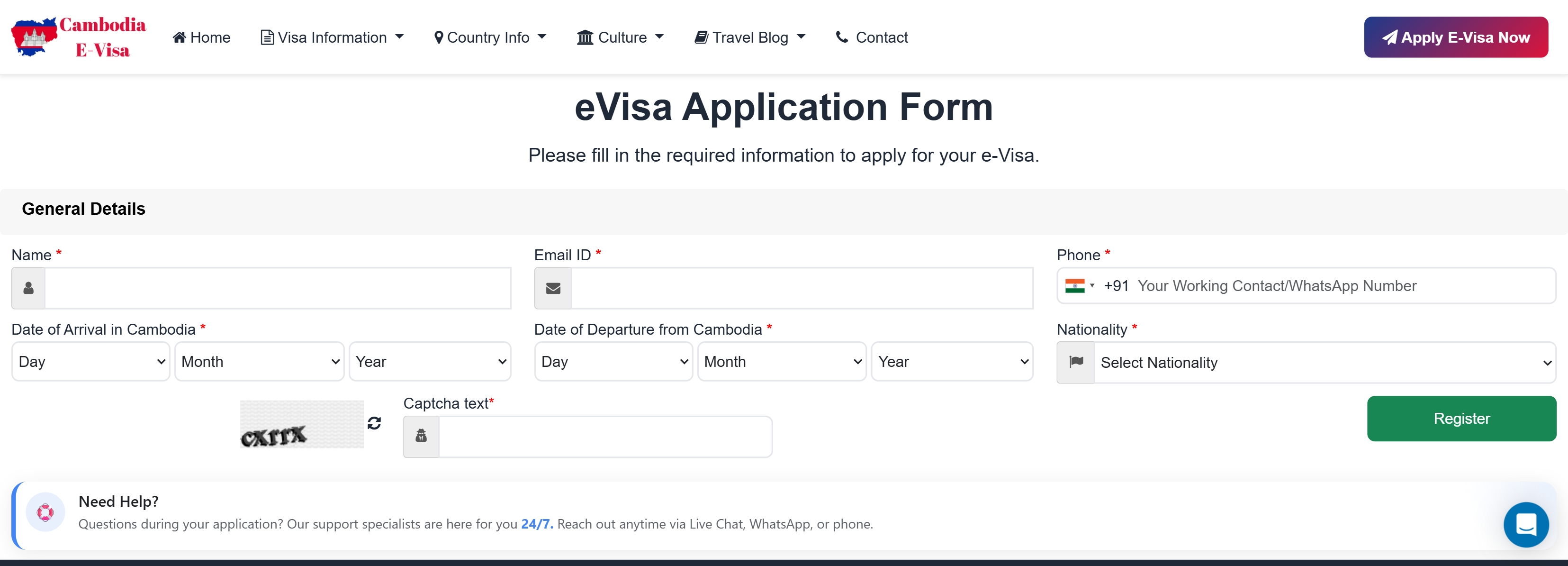
Fill Out the Application: You will need a digital, passport-style photo, a scanned copy of your passport (the main info page), and your travel details.
Pay and Submit: The fee is paid online via credit card..
Cambodia eVisa vs. Visa on Arrival (VoA): Which is Better?
When you land, you'll see two lines: one for "eVisa" and one for "Visa on Arrival."
Visa on Arrival (VoA): This is where you get your visa at the airport. It costs $30 USD (so it's $6 cheaper), but you must have an "on arrival" application form, a passport photo, and exact USD cash. You will also have to wait in this line, which can take 20-40 minutes depending on your flight.
eVisa: You go to the (usually empty) eVisa line, hand over your printout, get stamped, and walk through in under 5 minutes.
Verdict: The eVisa more, but it is highly recommended. It saves you time, stress, and the hassle of carrying exact US dollars and extra passport photos just for the visa.
Is Angkor Wat Really Worth the Hype?
Yes, and then some. To be clear, Angkor Wat is not just one temple. It’s the crown jewel of the Angkor Archaeological Park, a 400-square-kilometer complex that was the largest pre-industrial city in the world.

You are not just visiting a ruin; you are walking through the capital of a 1,000-year-old empire. The "must-sees" within the park include:
Angkor Wat: The main event. The world's largest religious monument. Go for sunrise, but stay to explore its intricate carvings.
Bayon Temple: Located in the center of Angkor Thom, this is famous for its 216 giant, smiling stone faces.
Ta Prohm: The "Tomb Raider" temple, where giant silk-cotton trees are locked in a stone embrace with the ruins.
What is the Best Way to Explore the Angkor Temples?
The city of Siem Reap is your basecamp, located just a few kilometers from the park. To explore, you’ll want to hire a tuk-tuk driver for the day. For about $15-$20, they will pick you up from your hotel, take you on the "small loop" or "grand loop" of temples, and wait for you at each stop. It's the classic, breezy, and perfect way to see the park.
How Many Days Do You Need in Cambodia?
You could spend months, but for a first-timer, a 7 to 10-day trip is ideal to cover the "classic circuit" without rushing:

Siem Reap (Angkor Wat): 3-4 days
Phnom Penh (The Capital): 2-3 days
Koh Rong / Koh Rong Samloem (The Islands): 3-4 days
This gives you time to balance the awe of the temples, the history of the capital, and the relaxation of the beaches.
Is Cambodia Safe for Tourists in 2025?
Yes, Cambodia is generally a very safe country for tourists. The Khmer people are famously friendly, gentle, and welcoming. Violent crime against tourists is rare.
However, like any popular destination, you should use common sense:
Petty Theft: Be cautious in crowded markets (Phnom Penh especially) and with your belongings. Bag snatching from tuk-tuks can happen, so keep your phone and bags close.
Scams: Be aware of common border or tuk-tuk scams.
Landmines: Stick to marked paths in rural and temple areas.
What is There to See Besides Angkor Wat?
So much. Cambodia is not a one-trick pony.
1. The Capital: Phnom Penh
The nation's capital is a chaotic, vibrant, and essential stop. Here, you must confront the tragic history of the Khmer Rouge (1975-1979). It's a somber but necessary experience to understand the country's resilience.
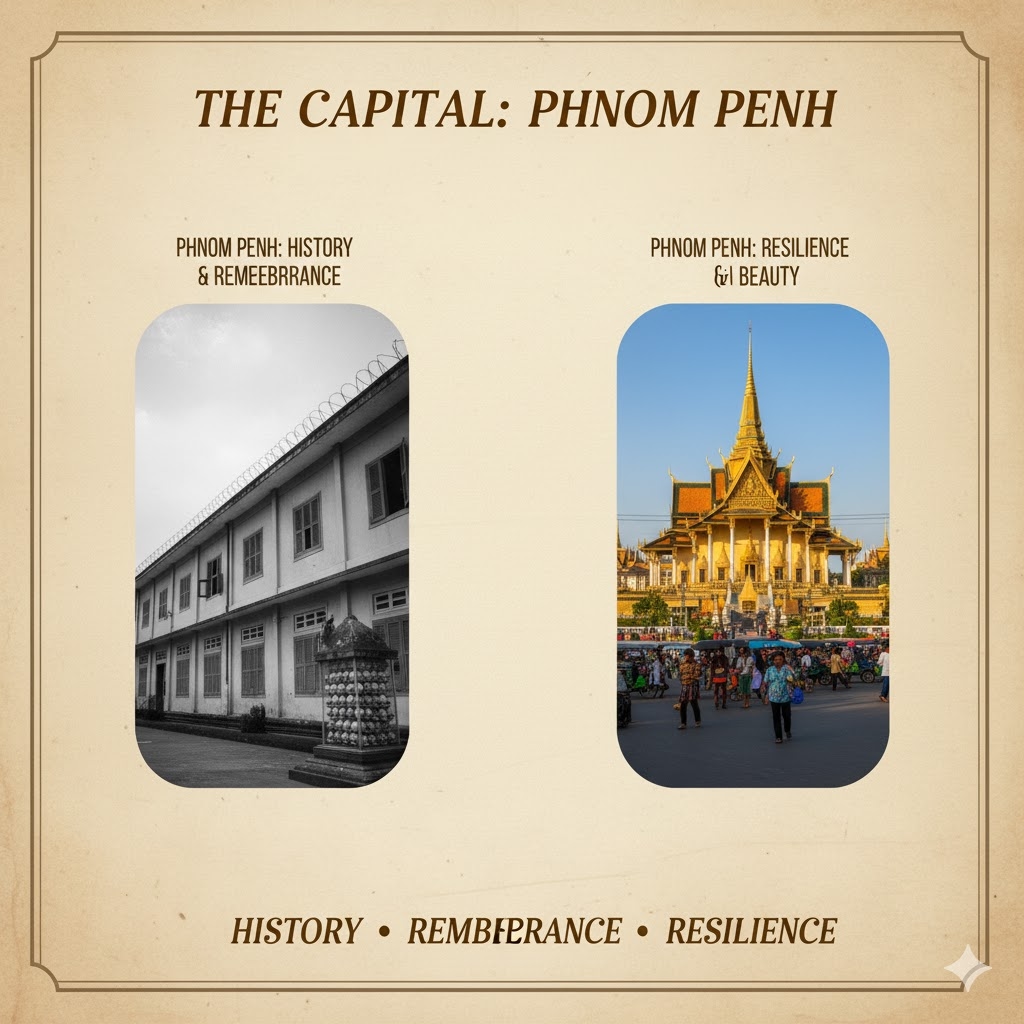
Tuol Sleng Genocide Museum (S-21 Prison): A former high school turned into a horrific political prison.
Choeung Ek (The Killing Fields): The final, heartbreaking destination for many S-21 prisoners.
On a lighter note, you can also visit the opulent Royal Palace, see the Silver Pagoda, and walk the bustling riverfront.
2. The Islands: Koh Rong & Koh Rong Samloem
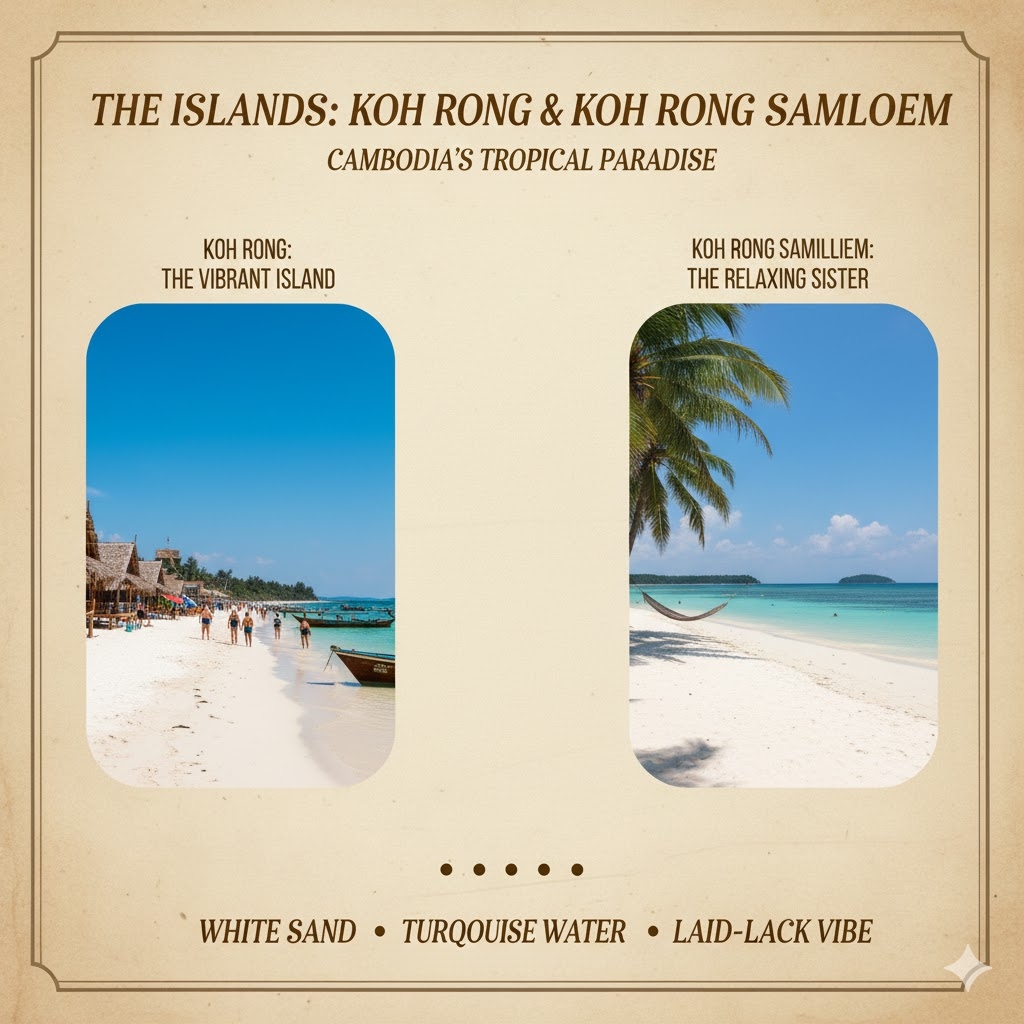
Did you know Cambodia has world-class tropical islands? If you're looking for the "Thailand of 20 years ago," this is it. The islands of Koh Rong and Koh Rong Samloem offer white-sand beaches, turquoise water, and a laid-back vibe. Koh Rong is the larger, more "party" island, while Samloem is its quiet, relaxing little sister.
Is Cambodia Good for Backpackers?
It's a backpacker's paradise. It's one of the most affordable travel destinations on the planet.
Accommodation: A bed in a clean, social hostel can cost $4-$8 USD.
Food: A delicious plate of street food (like bai sach chrouk or noodle soup) costs $1.50-$2.
Transport: A cross-country bus ticket is around $12-$15.
How to Get Around Cambodia on a Budget?
Tuk-Tuks: For short distances, use the PassApp or Grab apps (Asia's Uber). They have standardized tuk-tuk prices so you never have to haggle.
Buses: For long-distance travel (e.g., Siem Reap to Phnom Penh), companies like Giant Ibis offer safe, clean, and comfortable, air-conditioned buses for tourists.
What is the Currency in Cambodia? (A Note on USD vs. Riel)
This is a key tip for first-timers. Cambodia has a dual-currency system. The US Dollar (USD) is the unofficial primary currency. You will pay for your hotel, meals, and buses in USD.

The local currency, the Cambodian Riel (KHR), is used almost exclusively for small change. The exchange rate is fixed for convenience: $1 USD = 4,000 KHR.
So, if you buy something for $1.50, you will pay with $2 USD and get 2,000 KHR back. ATMs dispense USD. It's a system that's easy to get used to.
What is Cambodian Food Really Like?
Khmer cuisine is fantastic, and less "fiery" than Thai food. It's all about complex, aromatic flavors. Don't leave without trying:
Fish Amok: A creamy, coconut-based fish curry steamed in a banana leaf. It's the national dish.
Khmer Red Curry (Kari Sach Moan): A rich, mild, coconut-based curry, often served with a baguette.
Lok Lak: Stir-fried cubes of beef served with a peppery dipping sauce, rice, and a fresh salad.
What Should I Wear in Cambodia?
Out of respect, especially when visiting temples, you must dress modestly.
For Temples (Mandatory): You must cover your shoulders and knees. This is strictly enforced at Angkor Wat and the Royal Palace. A t-shirt and light trousers or a long skirt are perfect.
For Cities: It's hot and humid. Lightweight, loose-fitting clothing is your best friend.
The Final Word
Cambodia is a country that stays with you. It’s a journey of a lifetime, offering views that will awe you and stories that will move you. The people, who have endured so much, remain some of the kindest and most welcoming on Earth.
With the simple and fast eVisa system, there is truly no barrier left to stop you from experiencing the Kingdom of Wonder.
